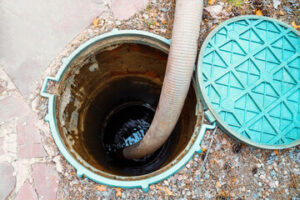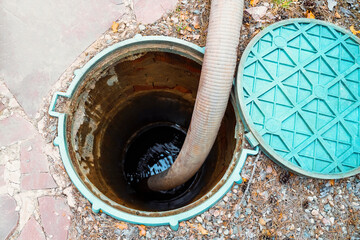Grease traps are vital tools in a commercial kitchen’s toolbox, but they must be kept clean regularly. Failing to do so can result in costly sewer blockages and steep fines.
Professionals can manage this process quickly, efficiently, and more thoroughly than anyone else. They also know how to keep you in compliance with municipal regulations. For more details, click here at https://www.septictankarmadale.com.au/.
 Cleaning
Cleaning
As a restaurant owner, you do a lot to keep your business running smoothly. You clean the preparation area, eliminate pests, get rid of expired ingredients, and more to ensure that your customers have a great experience when they dine with you. Another important task that many people forget about is cleaning the grease trap. Without regular maintenance and cleaning, this vital component of your waste disposal system can become clogged and lead to issues that can seriously affect your restaurant’s business.
When a grease trap isn’t cleaned properly, the cooking fats and oils will build up over time, eventually solidifying into a thick layer of sludge inside the trap. This layer can block the outlet of the trap and cause slow drainage, clogs, and overflows in your restaurant. Even worse, if the sludge makes its way into the municipal sewer system, it can cause blockages that result in expensive repairs and fines for your restaurant.
There are a few steps to proper grease trap cleaning. First, you should turn off the water supply to the grease trap so that you can remove the lid in a safe and controlled manner. Once the lid is off, you can use a heavy-duty scooper to remove the waste from the trap and place it into a garbage bag for disposal later. During the cleaning process, it’s a good idea to wear gloves and have two buckets available — one for the waste, and the other for the water you’ll be using to wash away the waste. This will help prevent the mixing of waste and water, which can create a stinky mess that could affect your customers’ dining experience.
After the trap has been cleaned, you should take a photo of it with your phone or camera to send to your grease trap service provider for inspection and maintenance. This will help the service provider spot any issues such as broken parts or a baffle that has degraded over time. If the problem is not caught quickly, it could cause a clog or overflow that would require snaking or jetting to resolve.
Pumping
As grease traps work to keep fatty waste out of your drain lines, you mustn’t let your trap get too full. Over time, a trap that’s too full can cause backups in your kitchen and even clog your incoming and outgoing sewer lines. Not only will this cause a major disruption to your business, but it can also lead to costly repairs and fines from the city.
The best way to avoid overflows is to regularly pump out your grease trap. A professional cleaning service can do this for you with a special machine that sucks the grease from the bottom of the trap. This method is much more effective than using liquid or solid chemicals that can damage the interior of your trap. Additionally, chemical products can often liquefy the FOG and sludge, which means that more of it will flow into your sewer system and cause clogs there as well.
When you use a professional cleaning service, they will also be able to examine your grease trap for any existing damage and treat it accordingly. They will also ensure that the grease is properly disposed of and follow all local regulations. If you’re worried about fines for non-compliance, hiring a professional will be worth it in the long run.
Leaving your grease trap unattended can also cause odors that will affect the atmosphere of your restaurant. Foul odors are not only unpleasant to your customers, but they can also be a sign that your trap hasn’t been cleaned recently. It can also lead to a lower health code score, which may affect your ability to continue operating your establishment.
You can make sure that you’re getting your grease trap pumped at the right intervals by setting a reminder on your phone or calendar. It’s a good idea to make this appointment after your kitchen has closed so that the process doesn’t interrupt your regular business operations. When you’re ready for a cleaning, a technician will arrive in a truck equipped with a specialized power pump and clean the trap, scrape it, and wash it down. They’ll then haul it off-site and dispose of it according to all local and environmental regulations at a licensed facility.
Inspection
In addition to cleaning your grease trap, it is important to inspect it regularly. Failing to properly maintain your trap can result in a backflow of dirty water into your restaurant’s plumbing system, as well as the city sewer line. This can cause a serious setback to your business, and may even require you to close down until the problem is resolved. In addition, if health inspectors find that your trap is not being cleaned correctly, they can impose hefty fines on you.
Grease traps act as interceptors for animal fats and vegetable oils that would otherwise flow into the sewer system. This fatty waste solidifies into a hard mass over time and can cause serious damage to water lines. When the grease buildup becomes too much, the system can overflow and contaminate the clean water drainage system. This will also result in unpleasant odors in your kitchen and restaurant, as the sewage mixes with the clean water.
A regular inspection of the grease trap can ensure that the baffles and liners are in good condition. The inspection will reveal if any of the components need repair or replacement. This can be done by using a stick or probe to determine the level of grease within the trap, or by examining the trap for signs of overflow. A vendor can replace or repair these components before they fail, preventing costly and unplanned repairs.
During the inspection process, a professional grease trap specialist will check to see whether or not your grease trap needs to be pumped out. If it does, they will use hoses to pump out the contents of the trap into a large tank that is usually located outside of your restaurant. This will remove any built-up grease and prevent it from clogging your drains, saving you money in repairs and maintenance costs.
If you have a quality grease trap service, they will take care of all the work involved in maintaining your trap. This includes record-keeping and proper disposal, which must be done according to local regulations. The professionals will also handle the paperwork for you, limiting your liability. They are efficient and specialized, which allows them to save you money by making your kitchen run smoother.
Replacement
The food waste that goes down your drains needs to go somewhere; and if it doesn’t, it could back up the entire sewer system. Your grease trap is a key part of the drainage process, and without one you’re likely to face serious plumbing issues that will halt operations, cost your business money, and possibly lead to fines from your municipality.
Grease traps are designed to catch FOG, but they don’t catch everything. Just like oil and vinegar that refuse to mix, FOG liquids rise to the top of the trap while solids sink to the bottom. The design of the grease trap consists of an inlet and outlet, where solids go out of the inlet and FOG liquids flow into the drainage system. For the trap to work properly, it must be cleaned and pumped regularly.
While some restaurants opt to clean their traps in-house to cut down on costs, this isn’t always as effective or efficient as having a professional service handle it. Failing to keep up with grease trap cleaning can result in a clogged system that causes foul odors and slow drainage, as well as backups in incoming and outgoing lines.
A professional service that’s experienced in dealing with commercial kitchens can provide insight into the proper maintenance of your trap, and they may also recommend upgrades or replacement parts. As the grease trap specialist handles the cleaning, they can also inspect the grease trap and its components for signs of damage or failure, and handle any repairs on your behalf to help you stay in compliance with city regulations.
Grease traps are an integral part of any restaurant’s plumbing system, and without regular servicing, you’ll quickly run into problems that can halt your operations, cost your business money, and possibly lead to fines from your municipality. Choosing a reputable grease trap servicing company can make all the difference in the performance of your trap, and having trained professionals handling its maintenance can save you money in the long run. It’s worth taking the time to compare services and prices to find the right fit for your establishment.




